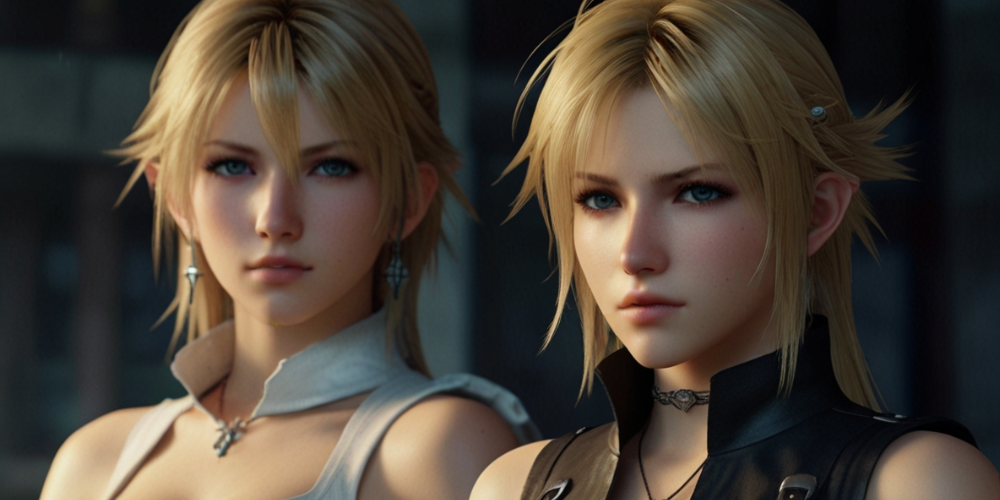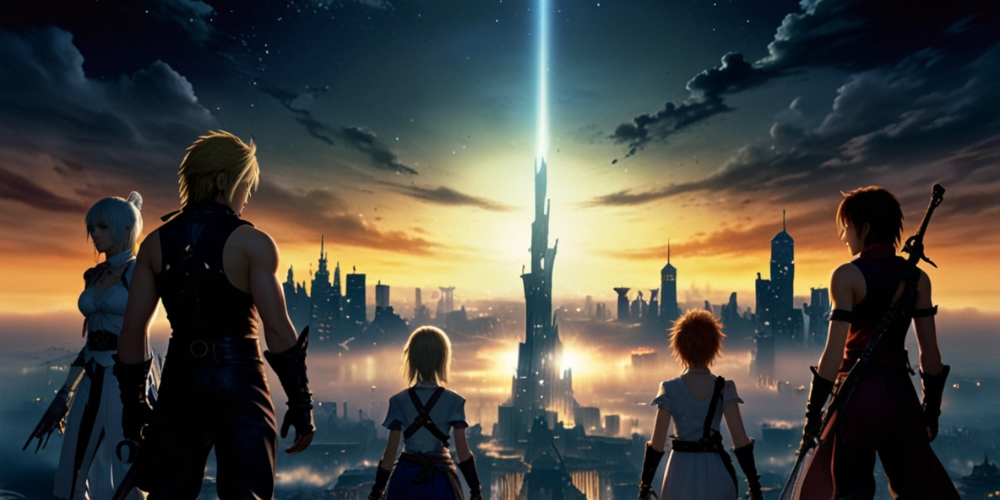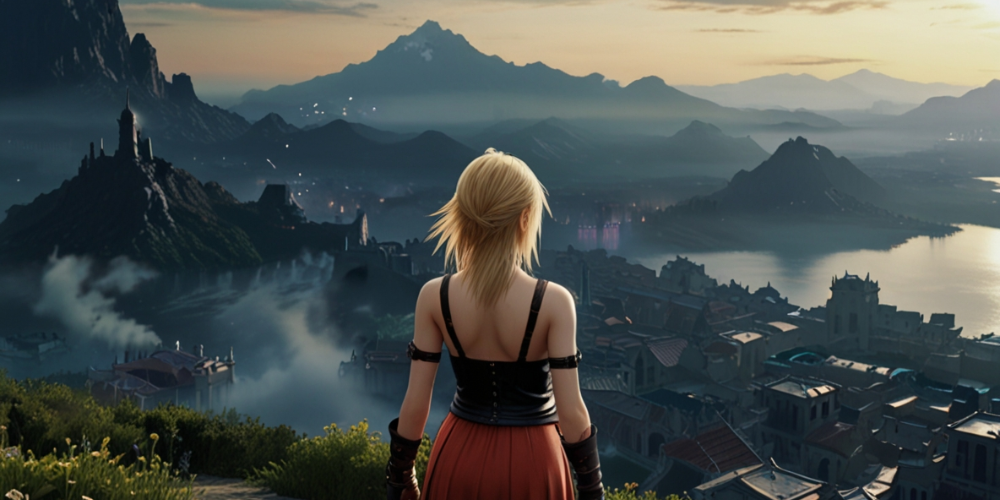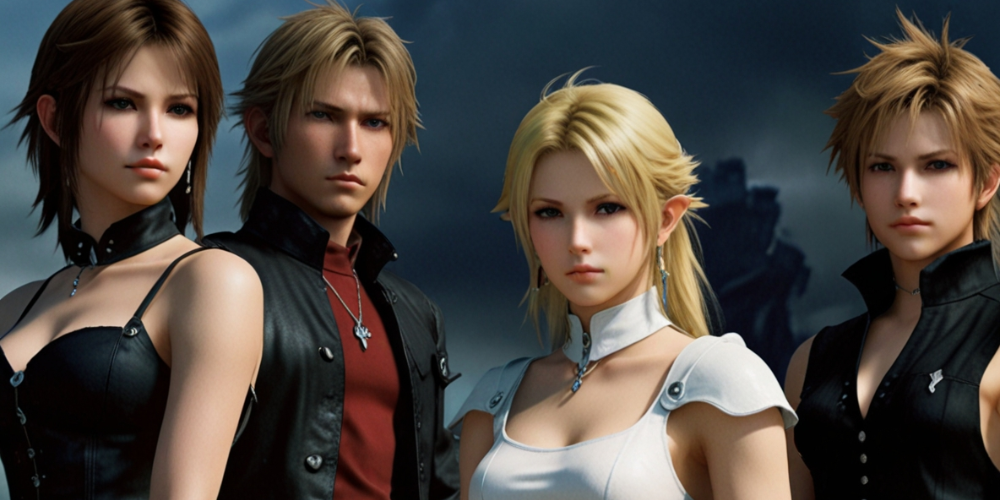The Evolution of Character Design in the Final Fantasy Series
- Aug 15, 2024
- 0

As an avid gamer and a passionate enthusiast of character design, my fascination with the Final Fantasy series has only deepened over the years. From the very first title released in 1987 to the modern interpretations that grace gaming consoles today, the evolution of character design has been nothing short of extraordinary. Each installment has added new layers not only to the storyline but also to how characters are visually brought to life.
The Humble Beginnings
My journey started with the original Final Fantasy. The graphics were rudimentary, yet there's something innately charming about the pixel art that represented characters like Warrior, Thief, and Mage. Although they were simplistic by today’s standards, these designs allowed my imagination to fill in the gaps. I still remember creating elaborate backstories for each character, driven primarily by the little text boxes that portrayed their dialogue.
The Power of Unique Classes
With Final Fantasy III ( which later became Final Fantasy VI in the West), character design took a remarkable leap. The introduction of a more intricate class system allowed for remarkable diversity. I was drawn to characters like Terra and Locke, who had distinct appearances and backstories. Terra’s elegant design blended well with her mysterious motivations, making her an instant favorite for fans, including me.

Embrace of Anime Aesthetics
As I delved deeper into the series, it was clear that Square Enix began embracing anime-inspired aesthetics. The characters in Final Fantasy VII, such as Cloud and Tifa, epitomized this shift. I was captivated by Cloud’s spiky blonde hair and iconic Buster Sword. Tifa’s design reflected strength while maintaining an alluring appeal. The designs felt like they had leaped straight out of an anime series, and I was completely on board.
Complex Emotion Through Design
Final Fantasy IX brought me a new dimension to character design that focused on emotive expressions. Zidane, Garnet, and Vivi showcased a range of emotions through not only their facial features but their overall design. Vivi's simplistic appearance became a poignant mirror to his struggles, illustrating how impactful visual storytelling could be. I found myself investing deeply in their journeys, feeling a strong connection to them.

Revival of a Classic
In stark contrast, Final Fantasy X took a different approach by incorporating 3D models that allowed for more realistic expressions. Tidus and Yuna’s designs appeared more lifelike, giving way to a fresh approach that mirrored the narrative's themes of love and loss. The intricate details in their clothing and the vibrant colors represented their world beautifully. I was incredibly absorbed by how much personality was packed into their designs.
Character Customization
Final Fantasy XI marked the onset of online gaming, introducing a customizable character design. Suddenly, I could create my own avatar to represent me in Vana'diel. The freedom to tweak skins, faces, and classes made the experience even more personal. It was fascinating to see how my choices shaped my in-game persona while still being part of a broader narrative with established characters.
The Ensemble Cast of Final Fantasy XII
With Final Fantasy XII, I was introduced to the rich tapestry of an ensemble cast. Each character had a distinct personality and style that reflected their background and motivations. Vaan, Ashe, Balthier, and their companions showcased a myriad of influences, from fashion to storytelling. The designs felt organic to the world of Ivalice—a mesh of European influences paired with fantastical elements. I loved the sense of depth in every character's backstory.

A Shift Towards Realism
Final Fantasy XIII was when I noticed a marked shift towards a more realistic design, especially in the portrayal of female characters. Lightning’s striking features and heavy armor brought a new level of sophistication to character design. Each character’s outfit was intricately detailed, offering a mix of futuristic elements blended with traditional fantasy. I found myself pondering how the designs reflect their struggle against fate.
Emphasizing Diversity in Design
With Final Fantasy XIV, the focus on character diversity reached new heights. The inclusion of various races, such as Miqo'te and Au Ra, enriched the world’s lore and aesthetics. Customization options skyrocketed, enabling me to create characters that resonated with my personality. I loved exploring this vibrant world with characters that were not only visually appealing but also culturally rich.
Returning to Roots with Modern Flair
Final Fantasy XV seemed to me like a return to the roots of camaraderie. The design of Noctis and his friends reflected modern sensibilities while drawing inspiration from earlier character archetypes. Their designs felt grounded and relatable, giving them an approachable quality. I appreciated the way the outfits indicated their personalities—Gladiolus with his sturdy armor, Prompto with his casual flair, and Ignis with his sophisticated style.

Cinematic Designs: The Intersection of Games and Movies
As the series delved into the realm of cinematic storytelling, the character designs took on a more cinematic quality. The implementation of CGI techniques further blurred the line between video game graphics and traditional animation. The opening scenes of Final Fantasy VII Remake, for instance, made me feel like I was part of an epic film. The characters exuded charisma, elevating each moment into a compelling visual story.
The Artistic Freedom of Spin-Offs
Spin-offs like the Final Fantasy Tactics series and various mobile games explored alternate styles of character design. The chibi art style in games like Final Fantasy: All the Bravest presented a different aesthetic. While it was lighter and more whimsical, I found this change refreshing, allowing for a broader interpretation of the beloved characters I had grown to know.
Understanding Cultural Influences
The character designs have also evolved to reflect cultural influences. For example, the incorporation of design elements inspired by various mythologies and diverse global aesthetics in Final Fantasy increasingly enriched the narratives. It's a beautiful thing that designers pull inspiration from all over the world, giving depth to character backgrounds without losing the essence of their fantasy origins. Seeing characters that reflected various cultures made me appreciate the series even more.
The Future of Character Designs
As I reflect on the evolution of character design within the Final Fantasy series, I eagerly anticipate what lies ahead. With the growing capabilities of technology and a diverse artistic vision shaping the upcoming titles, I have no doubt that future characters will continue to push the boundaries of creativity. Each title invites us into new worlds with a promise of unforgettable journeys, and the designs will undoubtedly be a pivotal part of that experience.